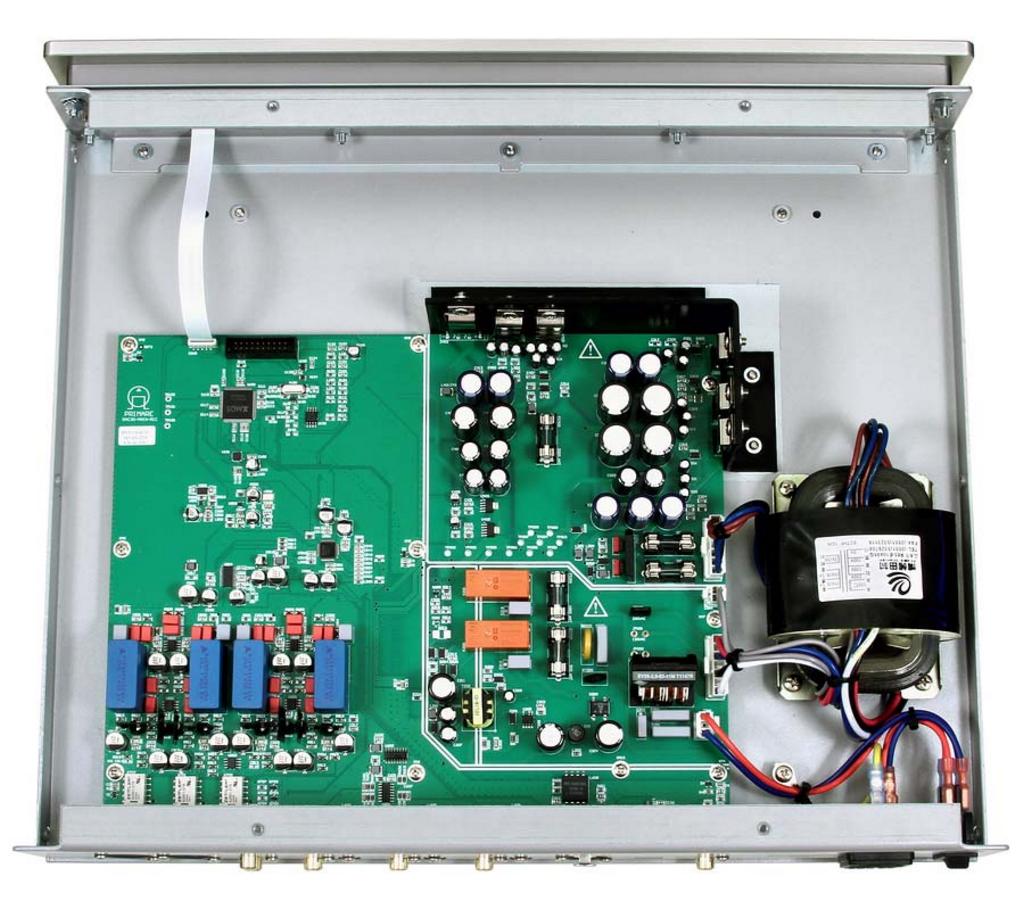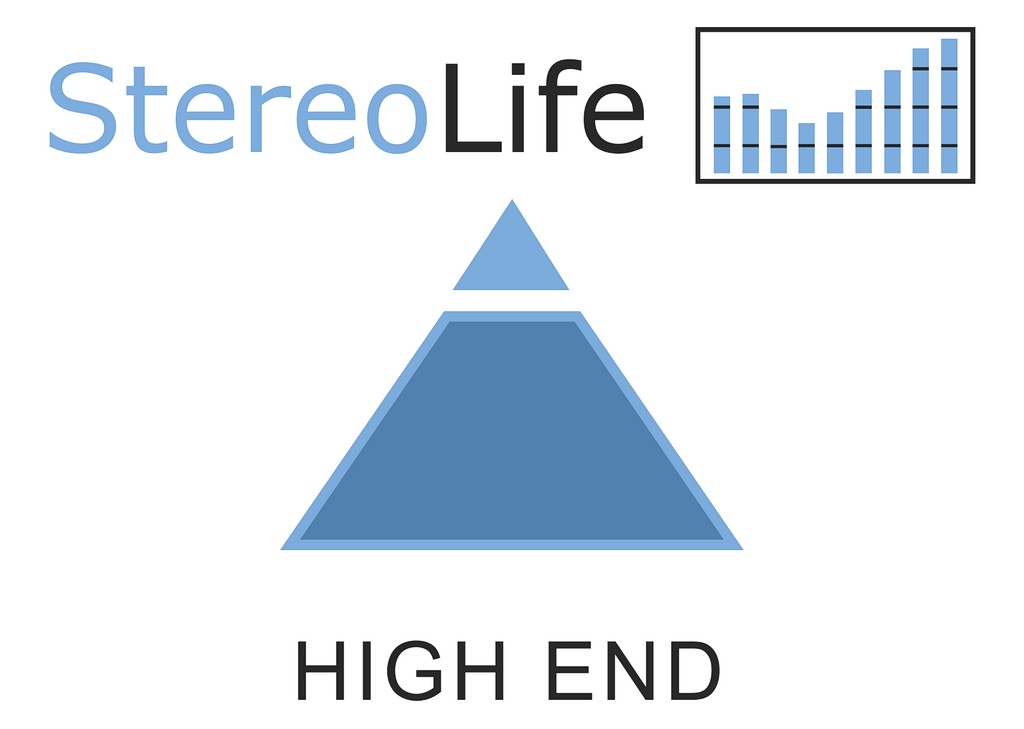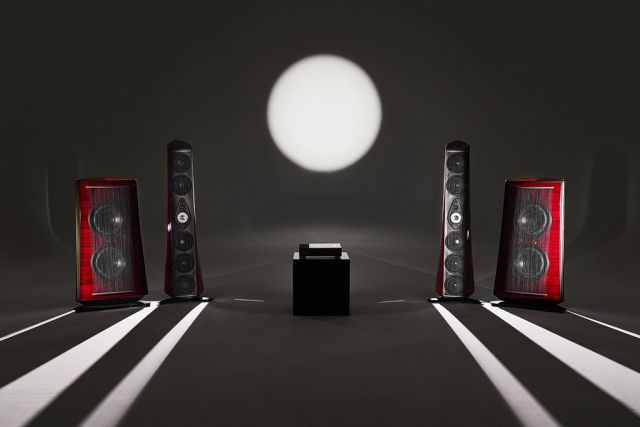
- Reviews
- Posted
Primare DAC30
Scandinavians have a sense of style. Simple forms and raw materials appeal to customers looking for timeless elegance. Primare is one of the manufacturers who designed their own looks long time ago. The brand exists primarily as a manufacturer of amplifiers and CD players, however it has relatively quickly introduced new DAC3 converter and NP30 network player. You can also buy an integrated amplifier and later extend its functionality with network functions or DAC with USB input, thanks to optional extension cards. The outer design of scandinavian devices resists any changes. I have no idea when the first unit looking like this appeared on the market, but I know it must have been a long time ago. Despite this, Primare's products still look fresh and modern. Over the years they introduced minor modifications, but some marks remain intact.
The first are beautiful buttons and knobs - a very comfortable and elegant solution. The second is the front extending from the enclosure, a little separated from it. Some reviewers called it a double front wall, but it is a bit exaggerated. More accurate diagnosis would be that between the front and an essential part of the enclosure we have a large gap, which is also quite elegant. It is clear that it's a single, metal bar with gently rounded edges. This form is very characteristic, and what is carved in it, depends on the particular model.

Design and functionality
After the recent adventures with streamers I felt let down a bit when I opened the box with accessories. The only thing there was the power cord. On the one hand, it is an audiophile DAC, so even this little thing seems to be redundant. Certainly the purchaser of such device already has a good power and interconnect cable, and if not, they are probably planning to buy them in the near future. But on the other hand, the DAC30 costs about £2000, and it is nice to find some little things in the package of such device. At least to emphasize its status. Maybe Scandinavian designers felt that their converter does not need anything like that. In the manual I found mention of the remote control on the symbol C24. On the pictures it looks very elegant, and probably it is used mostly to select the digital input and blanking LED's on the front panel. Indeed the black eye of the infrared receiver is right next to them. But the remote had to be left somewhere at the distributor's office, because I didn't find it in the box.
The converter itself looks brilliant. DAC30 is extremely modest, but it is only pretense. I assumed it because of the fully balanced circuit and plenty of sockets on the back. Digital inputs are numbered from 1 to 5. The first three are the sets consisting of coaxial and optical inputs. Fourth input is AES/EBU in the form of XLR socket, while the fifth is an asynchronous USB type B input. Then we have the coaxial digital output, three-pin power plug and the main power switch. There are two analog outputs - XLR and RCA. On the front panel we see only two buttons - one supports standby mode, the second allows you to select the digital input. White LED's provide information about the active input and a sampling rate - maximum parameters are 24 bits and 192 kHz.
Installation of this D/A converter should be simple, but it is not always plug and play. PC users with Windows have to download and install the driver from the manufacturer's site. It takes a minute, and after this we can easily change the audio output device and start listening. Owners of OS X 10.4 or later have to do nothing at all. The DAC30 appears as 'Primare Audio DAC', not as any unidentified device. Maybe it is a little thing, but it shows a serious approach of the manufacturer.
The device has a rather standard dimensions and weighs 8.5 kg. DAC30 stands on three massive legs. When we connect the cables, we should not push the rear corners of the enclosure. However, it must be said that this device was very friendly to use during the review. We have no gadgets, displays and complicated settings here. After installation the DAC30 just works, bringing out all the best out of your digital music. If the manufacturer declares that it was created to improve the sound devices such as CD31, the bar must be set high. This CD player was one of the best sound sources that have appeared in my reference system for a long time. If you decide to buy the DAC30 converter, only one question remains - black or silver? Just remember that black gear sounds better;-)

Sound performance
Not so long ago we tested the T+A DAC 8, so theoretically we should not be surprised to hear audiophile sound extracted from files stored on the hard disk. In the first minutes of listening, the DAC30 greatly impressed me. Smaller and slightly cheaper T+A D/A converter behaved very correctly, while Primare is a real beast. Its aim is to draw all the details from music and prove that the sound from your computer can be not only natural, but also addictive and full of energy. In this case, probably microdynamics is the key to success. Otherwise I can not explain the pugnacity of this Swedish product. Its sound almost constantly vibrates, like it was on some afterburner. Simple music is enough to hear the power. All sounds gently accelerate and the performance becomes incredibly crisp, clear and realistic. Primare is not warming up to get us only when we exclude it from the system. Instead, it fascinates from the first notes, clearly implying that we have just jumped to a higher level and we will want to stay there.
When I hear such things, I approach them with caution at first. The voice of experience in my head suggests that we never get such revelations for free. Performance often becomes boring or even irritating after a few days. I was prepared to discover some big problems with any next album. So I waited with writing and listened to this device cautiously for quite a long time. My playlist consisted of such artists like Hidden Orchestra, Hiatus, Trifonic, Bonobo, Marcus Schulz, Dream Theater, Drowning Pool, Serj Tankian, Tool, Alanis Morissette, Madonna, Loreena McKennitt, Elsie, Ludovico Einaudi, Sub Focus and Lana Del Rey. I do not even metion the classical music. It is a significant section of musical moods and quality of recordings, and still I liked the performance of the DAC30 very much. A potential drawback, which I feared in the beginning, somehow has not revealed. Could I finally find a D/A converter which challenges the old formats, remaining sufficiently audiophile and universal source for every kind of music?
Well, looks like it. Please, do not think that I treated Swedish product with any hostility. The more expensive device stands in front of me, the more critical I am. But I can't cavil here. Obviously this is not the ideal equipment for the fans of warm tube sound. Primare goes for a completely different aesthetic and somehow this goal is fulfilling in many ways perfectly. But if we really should expect warm sound temperature and gentle from the source? This would mean that the sound is warped from the very beginning. Primare assumes that the role of the D/A converter is to provide a natural and balanced sound with as many details as possible. After a few days of listening I can only say that no DAC has put my audio files through the hoops yet, like the DAC30. The speed and dynamics are really impressive. In tandem with the energy goes the soundstage. Wide, full of air and arranged. Bass? Here DAC30 is not imposing it a specific character. Sometimes the bass sounds powerful and bold, and sometimes it's quick and punchy. Associating with such sophisticated source we quickly come to the conclusion that the quality of the recording has the greatest influence on the final result. In a sense, it is obvious, but we will not hear such differences between the reproduced files with low-end DAC's. Primare is one of those devices, which prove that audio files can also send shivers up a spine.

Build quality and technical parameters
Primare DAC30 is a high quality digital-to-analog converter. The electronics are built entirely on one large circuit board hidden in a strong, metal enclosure. The use of R-Core transformer in the power supply is quite interesting. There is also a vertical metal plate in the shape of the letter "L" acting as a heat sink. It gives a large part of the heat to the base of enclosure, to which it was fastened using a thermal paste. Actually here there are eight separate circuits in the power supply - three for the analog section, four for digital section and one for standby mode. The manufacturer copied some of the solutions already used in the BD32 universal player. These can be found in the DAC section and the analog output circuitry. Orthodox audiophiles will not love it, but the designers apparently came to the conclusion that there is no point to once again invent something that has already been invented. Signal goes to the receiver and SRC4392 converter with sampling frequency of 192 kHz, and then to the 24-bit DSD Crystal CS4398. In the output stage we have Burr-Brown OPA2134 op-amps, film capacitors supplied by manufacturers such as WIMA and EPCOS, high-quality MELF resistors, Sanyo OS-CON capacitors and MOS-FET transistors. In the technical data we should pay attention to the voltage of the signal at the analog outputs. Whather you choose a balanced or unbalanced output, it will be 4.3 V. So especially in the case of RCA outputs, it is much more than the standard 2.0 V. DAC30 will play louder than most sources and you should remember about it while listening. Output impedance is 100 ohms (RCA output) and 110 ohm (XLR output). S/N ratio is 120 dB.

System configuration
Naim CD5 XS, Naim NAC 152 XS Naim NAP 155 XS, Albedo Geo, Audium Comp 5, Divine Acoustics Proxima, AriniAudio Individual, Enerr Tablette 6S, Gigawatt LC-2 mkII, Audioquest NRG-2, Ostoja T1.

Verdict
If someone watches movies filmed in a cinema on a small laptop, I can understand why they don't like 'Inception', 'The Dark Knight', 'Gravity', 'The Prestige' or 'Stoker'. Similarly, if an audiophile, who accustomed to high-end CD-players, decides to enter the world of files by using a budget DAC or the USB in their amplifier, they should not expect miracles. Listening to the files gives a lot of pleasure even if we do it in such a simple way. But if we want to do it seriously and discover what digital music can offer, we must be willing to make sacrifices. DAC30 requires actually just one sacrifice - financial. However, when you leave the store with a thin wallet, you can be sure that only pleasure things await you at home. You can enter the hi-end level straight away, without a diploma in computer science and cables made out of cosmic dust. Fantastic machine!
Technical data
DAC type: 24-bit
Digital inputs: 3 x coaxial, 3 x optical, USB, AES/EBU
Analog outputs: RCA, XLR
Digital output: coaxial
S/N ratio: 120 dB
Digital output: coaxial
S/N ratio: 120 dB
Dimensions (H/W/D): 9,5/43/37 cm
Price: £2000
Manufacturer: Primare
Sound performance
Editor's rating
7.8Overall9Sound7Functionality8Design8Quality7Price

















